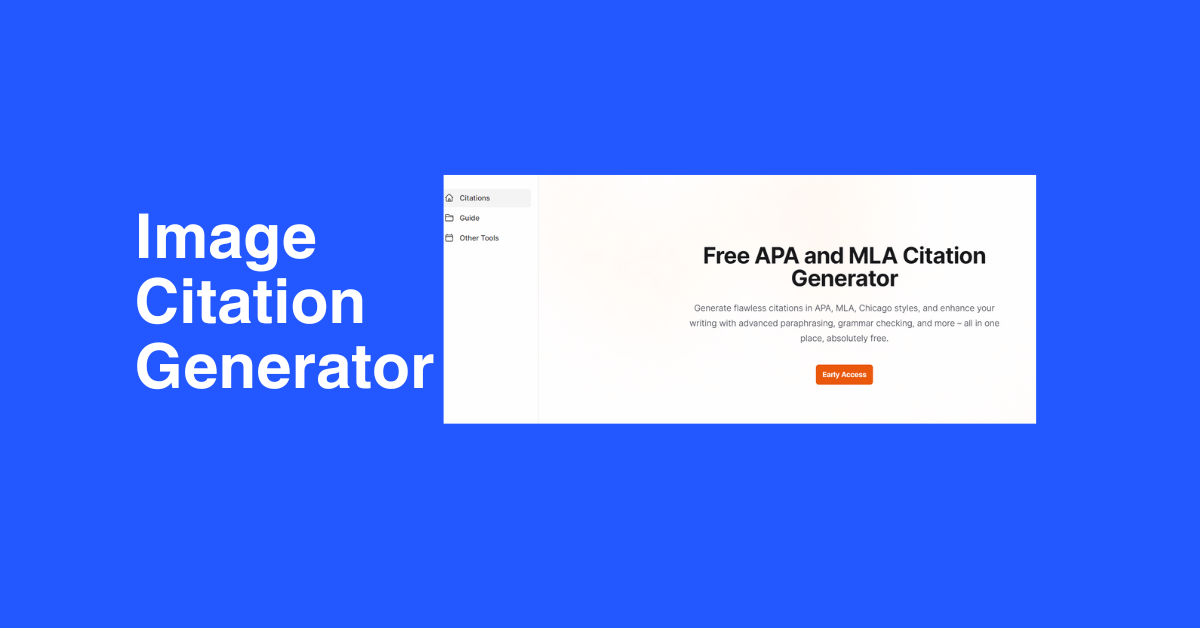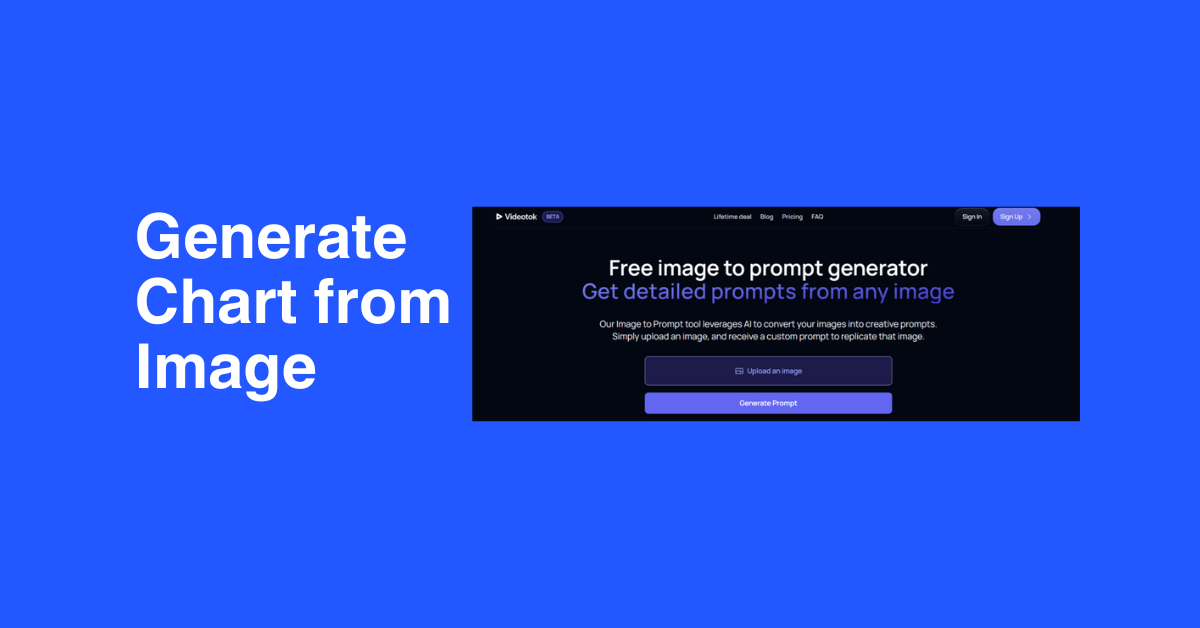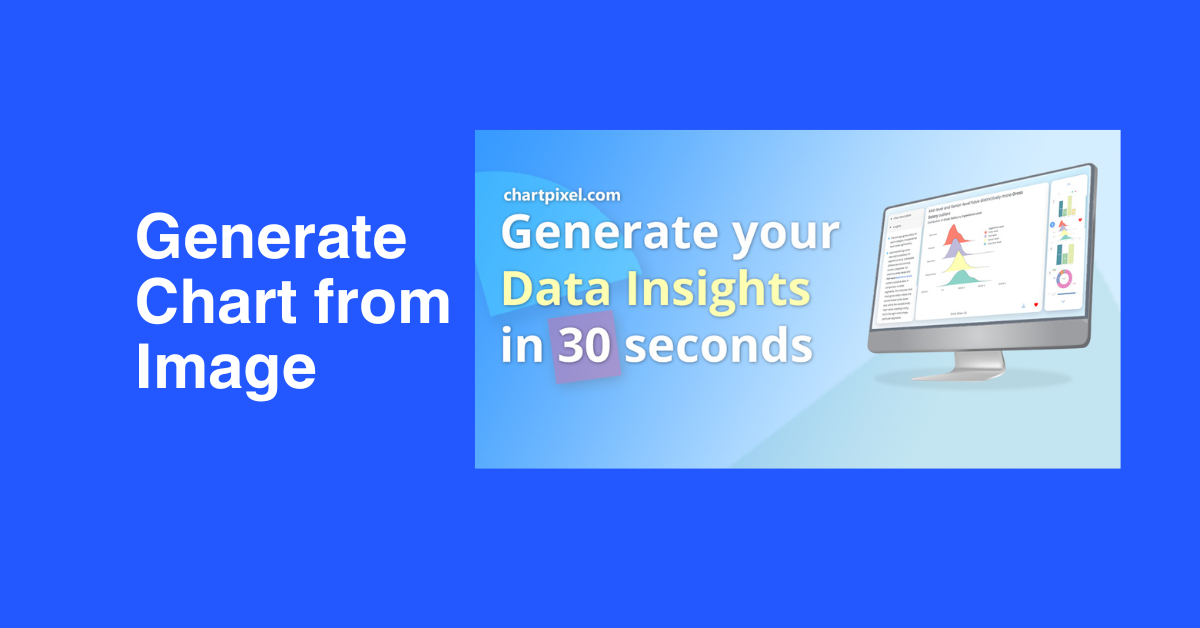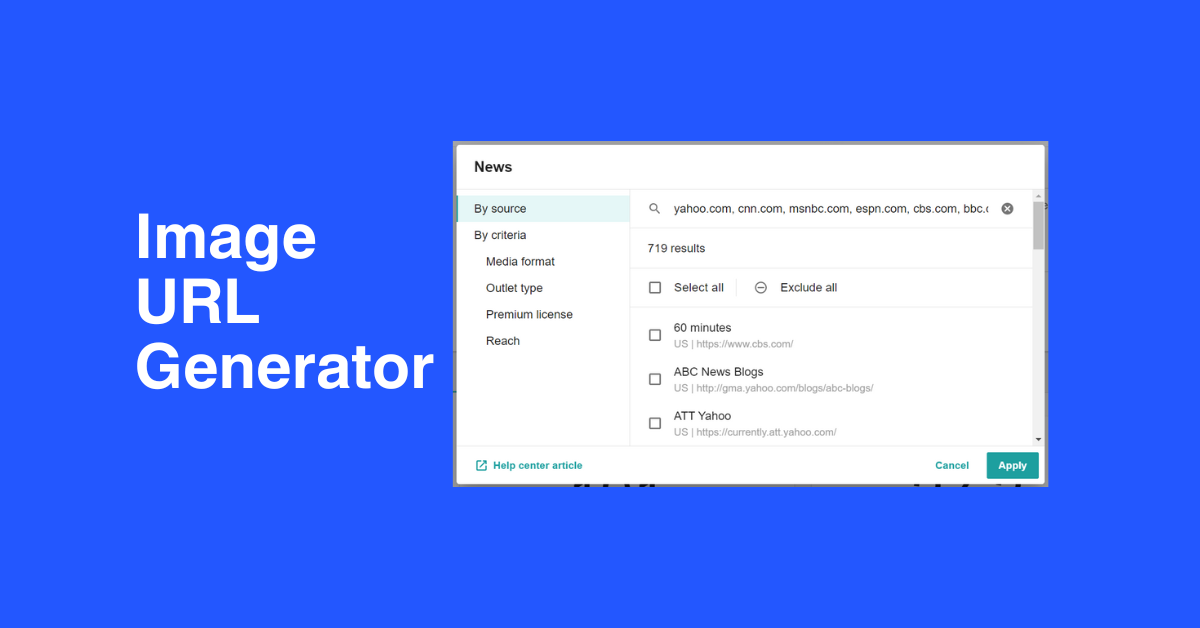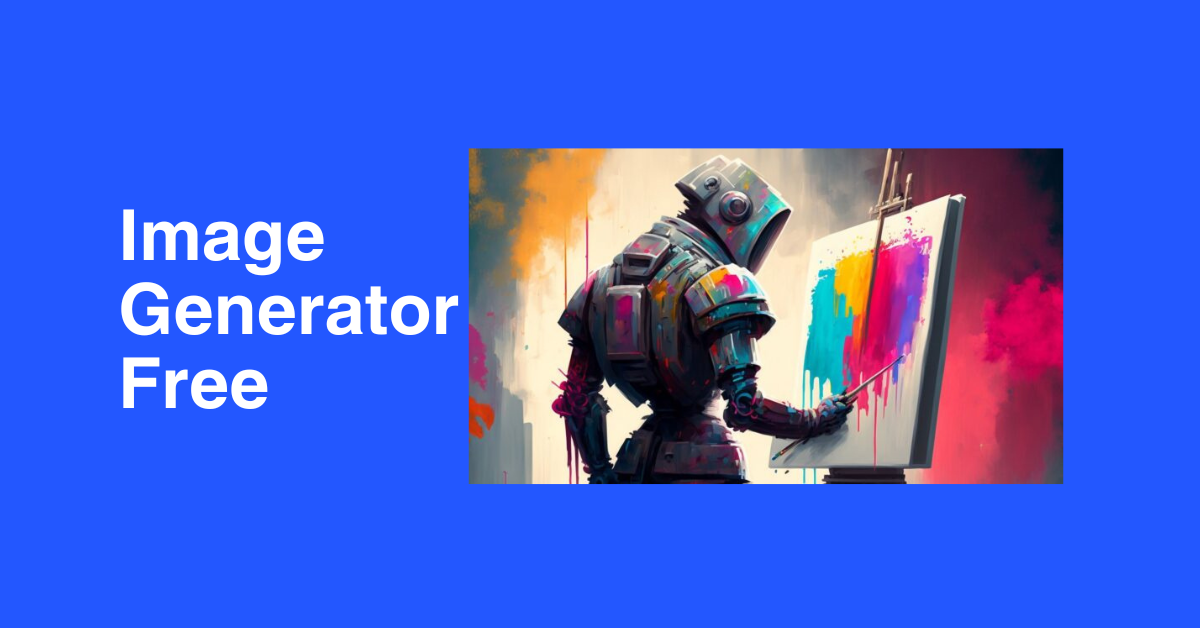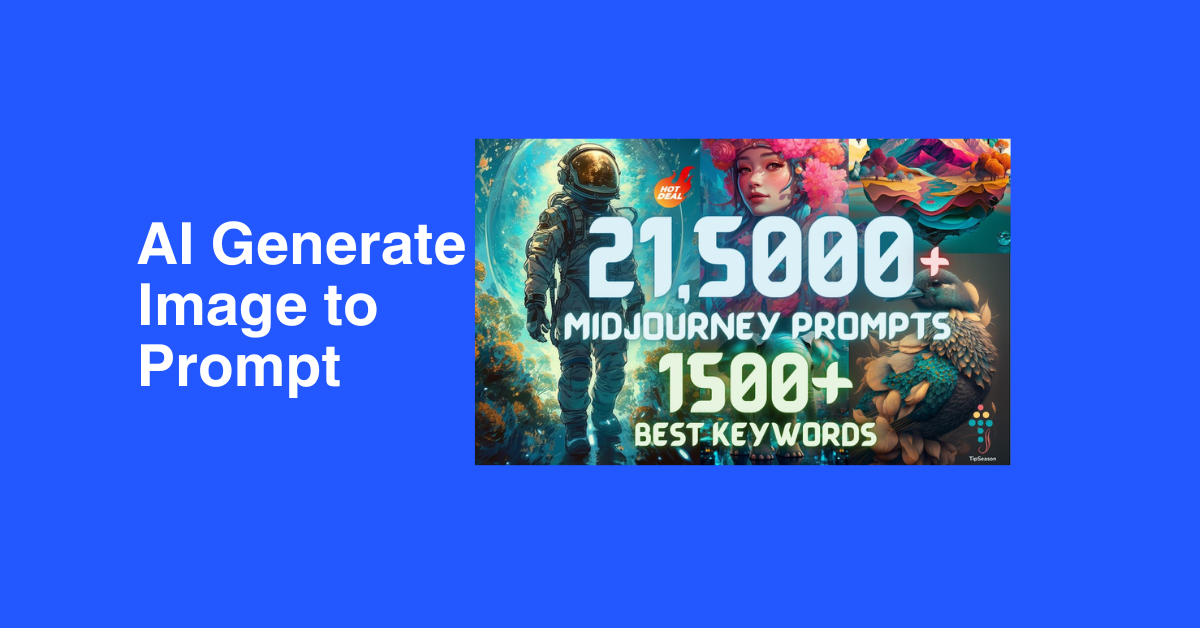
AI Generate Image to Prompt: Create Stunning Visuals Instantly
- Image Generators
- November 17, 2024
- No Comments
AI generate image to prompt tools have emerged as a pivotal force in the ever-evolving landscape of technology, particularly in creative fields. The process involves complex algorithms that interpret written words and translate them into intricate images, thereby unlocking unlimited potential for artists, designers, marketers, and hobbyists alike. This blog post delves into the fascinating world of AI-generated images, exploring everything from prompt engineering to the ethical considerations surrounding this technology.
AI Generate Image to Prompt: From Text to Stunning Visuals

AI image generation is a transformative tool that bridges the gap between creativity and technology. It empowers individuals to express ideas visually without requiring traditional artistic skills. By leveraging neural networks and deep learning techniques, these systems can generate images that are not only aesthetically pleasing but also rich in detail and complexity.
The fundamental premise behind AI image generation lies in the ability of algorithms to learn from vast datasets. These models analyze millions of images and their corresponding textual descriptions, allowing them to grasp the nuances of visual representation. When given a text prompt, the model draws upon this extensive knowledge to produce images that resonate with the input provided.
The Mechanics Behind AI Image Generation
Understanding the mechanics of AI image generation involves delving into the underlying technologies that make it possible. At the heart of this innovation are generative adversarial networks (GANs) and diffusion models.
Generative Adversarial Networks consist of two neural networks—the generator and the discriminator—that work in tandem. The generator creates images based on the input prompt, while the discriminator evaluates the generated images against real ones. Through this adversarial training process, the generator improves its output over time, ultimately producing highly realistic images.
Diffusion models, on the other hand, have gained significant attention for their ability to create high-fidelity images. They start with random noise and gradually refine the image through a series of iterative processes, guided by the textual prompt. This technique often results in more coherent and detailed visuals, making it a favored choice among contemporary AI image generators.
Applications Across Industries
AI image generation finds applications across a multitude of sectors. In advertising and marketing, businesses leverage these tools to create eye-catching visuals for campaigns, enhancing brand visibility and engagement. For instance, rather than relying solely on stock photos or costly photoshoots, companies can generate custom images tailored to specific themes or messages.
In the realm of entertainment, filmmakers and game developers utilize AI-generated imagery to conceptualize characters, settings, and scenes. This not only streamlines the creative process but also opens up possibilities for unique visual storytelling that may not have been achievable through traditional methods.
Moreover, educators and researchers are increasingly employing AI image generation for illustrative purposes, creating informative and engaging content that aids comprehension. By transforming complex concepts into easily digestible visuals, they enhance the learning experience for students.
Unlocking Creativity with AI: Prompt Engineering for Image Generation
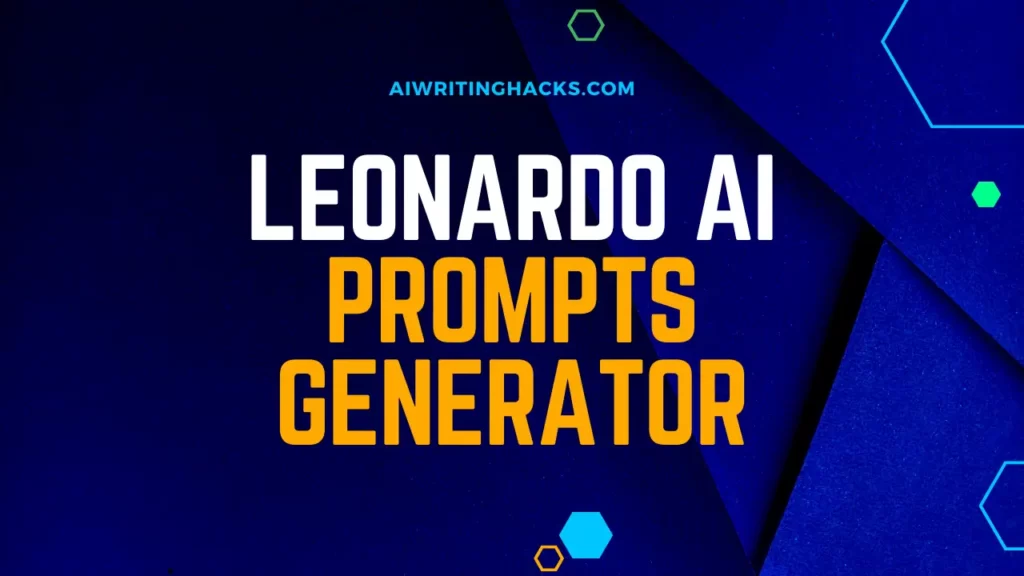
As we delve deeper into the world of AI image generation, one of the most critical aspects to consider is prompt engineering. The effectiveness of an AI image generator hinges significantly on the quality and specificity of the prompts provided. Crafting effective prompts requires a balance between creativity and clarity, enabling the model to understand the user’s intent accurately.
Prompt engineering is both an art and a science, allowing for a collaborative interaction between human creativity and machine learning capabilities. By mastering this skill, users can unlock the full potential of AI image generation tools, leading to more impressive and relevant outputs.
Designing Prompts: The Art of Clarity and Specificity
The first step in effective prompt engineering is understanding the importance of clarity and specificity. Vague prompts often yield generic images that fail to capture the desired essence. For example, a prompt like “a landscape” could result in a wide variety of interpretations ranging from mountains to deserts, leaving the user unsatisfied.
To enhance the quality of generated images, users should strive for prompts that provide clear guidance. Instead of simply stating “a landscape,” a more specific prompt such as “a serene sunset over a tranquil lake surrounded by pine trees” offers the AI a vivid mental picture to work with. This specificity allows the algorithm to draw upon its learned knowledge effectively, resulting in a more accurate and visually compelling image.
Experimentation and Iteration: A Key to Success
Another crucial aspect of prompt engineering is experimentation and iteration. Users should view the process as an ongoing dialogue with the AI, refining their prompts based on the outputs received. This iterative approach enables users to discover what works best for their particular needs.
For instance, if an initial prompt produces an image that is close to the desired outcome but lacks certain details, users can adjust their prompts accordingly. Adding descriptive adjectives, specifying color palettes, or incorporating elements of style can significantly influence the generated imagery. By being open to experimentation, users can uncover new creative avenues and optimize their interactions with AI image generators.
Combining Concepts for Unique Outcomes
Combining disparate ideas in prompts can lead to innovative and unexpected results. This technique encourages the fusion of different concepts, resulting in imaginative visuals that are outside the box. For example, a prompt like “a futuristic cityscape with medieval architecture” invites the AI to merge two distinct styles, producing a one-of-a-kind image that sparks curiosity.
This method not only enhances creativity but also allows users to explore thematic juxtapositions that may not be traditionally represented in visual media. By pushing the boundaries of conventional imagery, users can harness the power of AI to create visually striking and thought-provoking compositions.
The Power of Words: Crafting Effective Prompts for AI Image Generators
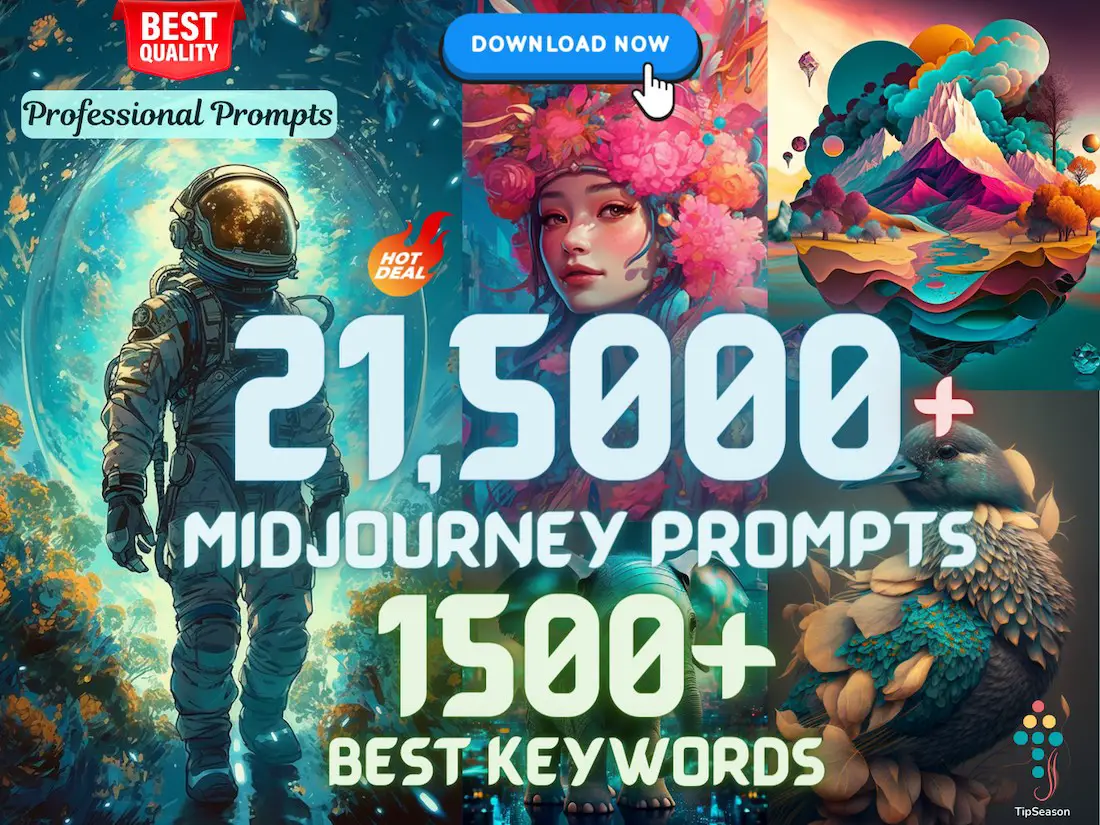
Words possess immense power, and when wielded alongside AI image generation technologies, they can bring forth breathtaking visuals that resonate with audiences. Crafting effective prompts involves understanding how language influences AI’s interpretation of concepts, thereby shaping the resulting images.
Language can evoke emotions, set tones, and conjure vivid imagery in the mind’s eye. Hence, choosing the right words is paramount in guiding AI image generators to create visuals that align with the user’s vision.
The Role of Descriptive Language
Descriptive language plays a vital role in crafting effective prompts. By utilizing adjectives and adverbs, users can convey nuanced emotions and characteristics that enrich the generated imagery. For example, instead of saying “a dog,” one might describe “a playful golden retriever happily bounding through a field of wildflowers.”
Such specificity not only paints a clearer picture for the AI but also elicits an emotional response from viewers who encounter the output. The inclusion of sensory details—such as colors, textures, and sounds—further enhances the richness of the prompt, providing the AI with a comprehensive context to draw upon.
Context is Key: Providing Background Information
In addition to descriptive language, providing contextual information can dramatically improve the quality of AI-generated images. Context encompasses not only the subject matter but also the intended use or setting of the image. For instance, if the goal is to create an illustration for a children’s book, the prompt should reflect that audience.
A prompt like “a whimsical dragon playing with children in a vibrant forest” clearly communicates the desired tone and theme. Conversely, a prompt lacking context, such as “a dragon,” could lead to a wide range of interpretations, some of which may not align with the user’s intent.
By offering background information, users empower AI image generators to produce visuals that cater to specific demographics, narrative arcs, or stylistic preferences, ensuring a more successful outcome.
Leveraging Creative Metaphors
Creative metaphors can serve as powerful tools in prompt crafting. By comparing subjects to relatable concepts or employing imaginative analogies, users can inject depth and intrigue into their prompts. For example, a prompt like “a city skyline at dusk, like a painting washed in hues of lavender and rose” elevates the imagery beyond mere description.
Metaphors invite the AI to explore imaginative realms and generate visuals that resonate deeply with viewers. By encouraging a lyrical quality in prompts, users can cultivate a sense of wonder and elevate the overall impact of the generated images.
Beyond the Basics: Advanced Techniques in AI Image Prompting
Once users become familiar with the fundamentals of prompt engineering, they can explore advanced techniques that open new dimensions in AI image generation. These techniques empower creators to push the envelope further, tapping into the full potential of AI-driven imagery.
Advanced prompting strategies enable users to achieve greater control over the aesthetic aspects of the generated images, empowering them to craft visuals that align precisely with their creative vision.
Multi-layered Prompts: Building Complexity
One of the most effective advanced techniques is the use of multi-layered prompts. By constructing prompts that encompass multiple elements or perspectives, users can guide the AI toward generating richly textured visuals. For instance, rather than a single statement, a prompt could include several layers of context: “a bustling market scene at twilight, with colorful stalls brimming with fruits, animated conversations, and twinkling fairy lights illuminating the atmosphere.”
This approach not only provides the AI with comprehensive information but also encourages it to weave together intricate narratives within the imagery. The resulting visuals can evoke dynamic scenes that captivate viewers and spark curiosity.
Stylistic Influences: Directing the Artistic Tone
Another advanced technique involves explicitly directing the artistic style in prompts. Users can specify styles akin to renowned artists, movements, or genres to influence the aesthetic outcome. For example, a prompt like “a serene beach landscape in the style of Impressionism, with soft brush strokes and pastel colors” guides the AI to adopt a specific visual language that resonates with the chosen style.
Being mindful of artistic influences allows users to create images that reflect not only their subject matter but also an overarching mood or cultural reference. This technique bridges the gap between traditional art forms and modern AI capabilities, resulting in visuals that honor historical art practices while embracing technological innovation.
Incorporating Emotion and Narrative
Incorporating emotional undertones and narrative elements into prompts can yield powerful imagery that resonates on a deeper level. By infusing prompts with feelings or stories, users can inspire the AI to generate visuals that evoke empathy or curiosity.
For instance, a prompt that reads “a lone traveler gazing at a distant mountain peak, filled with hope and determination” can inspire the AI to create an image that captures the essence of the human experience. The combination of emotion and storytelling not only enhances the visual appeal but also fosters meaningful connections between the art and its audience.
AI Image Generation: A Guide to Popular Tools and Platforms
As the demand for AI-generated imagery continues to surge, a plethora of tools and platforms have emerged to facilitate this innovative technology. Each platform offers unique features, functionalities, and user experiences, catering to diverse creative needs and preferences.
Navigating this landscape can be overwhelming, especially for those new to AI image generation. This section provides a comprehensive overview of popular tools and platforms, highlighting their strengths and capabilities.
Stable Diffusion
Stable Diffusion has gained significant traction as a powerful and versatile AI image generator. Known for its ability to create high-quality visuals from text prompts, it employs diffusion models to render stunning imagery. Users appreciate its intuitive interface, allowing for easy experimentation and exploration of creative ideas.
One of the standout features of Stable Diffusion is its community-driven nature. Users can share their generated images, exchange prompts, and collaborate on projects, fostering a collective creative environment. Additionally, the platform offers access to pre-trained models that can be fine-tuned for specific artistic styles or themes, giving users greater control over the output.
DALL-E 2
DALL-E 2, developed by OpenAI, is another prominent player in the AI image generation space. Renowned for its ability to generate imaginative and surreal images, DALL-E 2 excels at interpreting complex prompts with multiple elements. Its understanding of contextual nuances allows it to produce visuals that are both cohesive and captivating.
What sets DALL-E 2 apart is its capacity to create variations of existing images, enabling users to explore different iterations of their ideas. This flexibility encourages experimentation and helps artists refine their concepts before settling on the final design.
Midjourney
Midjourney is an innovative platform that emphasizes the intersection of AI and human creativity. It operates on a subscription model and offers users access to powerful image generation capabilities. Midjourney prioritizes community engagement, providing a lively forum for users to share their creations and engage in discussions.
One of the notable features of Midjourney is its emphasis on collaboration, allowing users to co-create images by inviting others to contribute to their projects. This collaborative spirit fosters a sense of camaraderie among artists and inspires fresh perspectives in image generation.
The Future of Visual Content Creation: The Role of AI Image Generation
As AI technologies continue to advance, the future of visual content creation is poised for exciting transformations. AI image generation stands at the forefront of this evolution, redefining how we approach creativity, storytelling, and artistic expression.
The integration of AI in content creation not only streamlines workflows but also democratizes access to artistic tools. Individuals who may have previously felt limited by their artistic skills can now harness the power of AI to manifest their visions into reality.
Enhanced Collaboration Between Human and Machine
The future of visual content creation will see a harmonious collaboration between human creativity and AI capabilities. Rather than replacing artists, AI image generation serves as a powerful ally, augmenting their ideas and expanding their creative horizons.
In this collaborative landscape, artists can focus on conceptualization, ideation, and refinement while leveraging AI for execution. This synergy cultivates an environment where artists can explore ambitious projects that were once deemed unattainable due to technical limitations.
Expanding the Boundaries of Creativity
With AI image generation, the boundaries of creativity are continually pushed. Artists can experiment with unconventional styles, juxtapose themes, and explore new mediums without the constraints of traditional artistic practices. This newfound freedom encourages innovation and allows creators to carve out unique identities within the digital landscape.
Furthermore, as AI continues to evolve, we can expect even greater advancements in image quality, realism, and customization. The integration of augmented reality (AR) and virtual reality (VR) elements may also pave the way for immersive experiences that bridge the physical and digital worlds, enriching the narrative potential of visual content.
Ethical Considerations and Impacts on the Art Community
As the popularity of AI image generation grows, so too do the ethical considerations surrounding its use. The ease of generating visuals raises questions about authenticity, ownership, and the value of traditional artistic skills. As AI becomes increasingly integrated into the creative process, artists must navigate these complexities while advocating for their rights and the preservation of artistic integrity.
The emergence of deepfakes and AI-generated imagery also calls for a responsible approach to usage. Ensuring transparency in AI-generated content and addressing concerns around misinformation will play a vital role in maintaining trust within the art community and broader society.
Ethics and Responsibility in AI Image Generation
The rise of AI image generation has sparked important discussions regarding ethics and responsibility. As creators embrace this technology, understanding the implications of its use is essential for fostering a respectful and inclusive creative landscape.
AI-generated imagery introduces complexities related to authorship, originality, and the potential for misuse. With the ability to create realistic visuals from textual prompts, there exists a risk of manipulation, misrepresentation, and the perpetuation of harmful stereotypes.
Ownership and Authorship
One of the most pressing ethical dilemmas surrounding AI image generation is the question of ownership and authorship. When an AI generates an image based on a user-provided prompt, who holds the rights to that creation? Is it the individual who crafted the prompt, the developers of the AI model, or the AI itself?
Currently, legal frameworks surrounding intellectual property struggle to keep pace with the rapid advancements in AI technology. As creators engage with AI image generation, it’s imperative to seek clarity regarding ownership rights, ensuring that artists are fairly compensated for their contributions.
Mitigating Bias and Harmful Stereotypes
AI systems are trained on vast datasets that may contain inherent biases, reflecting societal prejudices and stereotypes. Consequently, AI image generation can inadvertently perpetuate or amplify these biases in the generated imagery.
To combat this issue, developers and users alike must adopt a proactive stance in addressing bias. This entails critically evaluating training data, diversifying sources, and implementing ongoing assessments of AI outputs. Creators should exercise caution in choosing their prompts and be mindful of the potential consequences of their imagery.
Transparency and Responsible Use
Transparency is paramount in promoting accountability in AI image generation. Users should be informed about the capabilities and limitations of the technology, fostering a critical understanding of its outputs. Furthermore, ethical guidelines should be established to govern the responsible usage of AI-generated visuals, particularly in contexts where misinformation or exploitation could occur.
Creators should adhere to principles of honesty and integrity, clearly indicating when an image has been generated by AI. This fosters trust within the art community and ensures that audiences are aware of the origins of the visuals they encounter.
Case Studies: Real-World Applications of AI Image Generation
To better understand the impact of AI image generation, let’s explore some compelling case studies that showcase its real-world applications. These examples illustrate the diverse ways in which individuals and organizations are harnessing this technology to drive innovation and creativity.
Marketing Campaigns: Redefining Visual Storytelling
A prominent marketing agency recently turned to AI image generation for a campaign aimed at promoting a new product line. Rather than relying solely on traditional photography, they employed AI to generate visually striking imagery that aligned with the brand’s ethos.
By crafting imaginative prompts inspired by the product’s features and target audience, the agency produced a series of captivating visuals that resonated with consumers. The AI-generated images added an element of freshness and originality to the campaign, garnering positive feedback and increased engagement across social media platforms.
This case study highlights how AI image generation can redefine visual storytelling within marketing, allowing brands to present their narratives in innovative ways that captivate audiences.
Independent Artists: Pushing Creative Boundaries
Independent artists are also embracing AI image generation as a means of exploring new creative frontiers. One artist, known for her surrealist style, began incorporating AI-generated imagery into her portfolio alongside traditional techniques.
By crafting thought-provoking prompts that blended dreamlike elements with personal experiences, she was able to generate unique visuals that complemented her artistic vision. The integration of AI into her practice enabled her to experiment with styles and concepts that would have been challenging to achieve through manual methods alone.
This case study underscores the potential of AI image generation to empower artists and expand their creative repertoire, inviting them to venture into uncharted territory.
Education and Illustration: Enhancing Learning Experiences
In the realm of education, educators are harnessing AI image generation to create engaging instructional materials. A school district utilized AI-generated imagery to develop illustrated textbooks and online resources for students.
By crafting prompts that aligned with curriculum objectives, educators were able to generate visuals that simplified complex topics and made learning more accessible. The combination of AI-generated imagery with traditional teaching methods fostered a dynamic learning environment, capturing students’ attention and enhancing their overall understanding.
This case study demonstrates the transformative potential of AI image generation in education, paving the way for innovative approaches to pedagogy.
The Art of the Prompt: Tips and Tricks for Success
Crafting effective prompts for AI image generation is an art form in itself. By honing this skill, users can unlock the full potential of their AI tools and generate stunning visuals that align with their creative visions. Here are some tips and tricks to enhance your prompt crafting abilities:
Be Specific and Clear
As discussed earlier, specificity and clarity are key to effective prompt engineering. Avoid vague language and instead opt for detailed descriptions that provide context and nuance. The more specific you are, the better the AI can interpret your intentions.
Consider including elements such as colors, emotions, actions, and settings in your prompts. This comprehensive approach enriches the AI’s understanding and leads to higher-quality outputs.
Use Examples for Reference
When crafting prompts, consider referencing existing artworks or styles that resonate with your vision. By including comparisons, you provide the AI with visual cues that help direct its output.
For instance, if you’re looking for a fantasy-inspired landscape, you might include a prompt like, “a vibrant, enchanted forest reminiscent of classic fantasy illustrations.” Such references guide the AI’s interpretation and improve alignment with your creative intent.
Experiment with Different Angles
Don’t hesitate to experiment with prompts that explore different angles or perspectives. Changing the point of view or incorporating unique focal points can lead to surprising and innovative results.
For example, instead of simply asking for “a cat,” try prompting for “a curious cat peering out from under a colorful blanket.” This shift in perspective adds depth and character to the generated image, inviting the AI to create something truly distinctive.
Embrace Iteration and Feedback
Iterate on your prompts based on the outputs you receive. If an initial prompt doesn’t yield the desired results, take note of what aspects worked and what could be improved. Fine-tune your prompts through trial and error, and don’t shy away from seeking feedback from fellow creators.
Engaging in discussions within the AI image generation community can offer valuable insights and inspiration for refining your prompt crafting skills.
AI Image Generation: From Hobby to Profession
As AI image generation gains traction, many individuals are discovering pathways to monetize their creative talents using this technology. What began as a hobby for some has evolved into professional opportunities, allowing them to turn their passion for visual content into viable careers.
This section explores how aspiring artists and creators are leveraging AI image generation to transition from casual enthusiasts to professionals within the field.
Building a Portfolio of AI-Generated Art
Creating a diverse portfolio of AI-generated art is crucial for showcasing one’s skills and attracting potential clients. Aspiring artists can experiment with various styles, concepts, and themes, curating a body of work that reflects their unique artistic voice.
Platforms such as Behance, Instagram, and personal websites serve as excellent venues for displaying AI-generated imagery. By sharing their creations online, artists can connect with audiences, gain exposure, and establish themselves within the creative community.
Collaborating with Brands and Businesses
As businesses increasingly recognize the value of AI-generated visuals, opportunities for collaboration abound. Creators can partner with brands to develop customized imagery for marketing campaigns, social media content, and promotional materials.
By positioning themselves as experts in AI image generation, artists can offer specialized services that resonate with businesses seeking innovative visual solutions. This collaboration fosters mutually beneficial relationships, enabling creators to diversify their income streams.
Teaching and Sharing Knowledge
Individuals who have mastered the art of prompt crafting and AI image generation can explore opportunities in education and content creation. Offering workshops, tutorials, or online courses allows creators to share their expertise while building a reputation as thought leaders in the field.
Furthermore, contributing to online forums and communities dedicated to AI image generation fosters knowledge exchange and positions creators as valuable resources for those looking to embark on their own AI art journeys.
Conclusion
AI image generation has ushered in a new era of creativity, enabling individuals to transform textual prompts into stunning visuals that inspire and captivate. By mastering prompt engineering and exploring the myriad of tools available, creators can unlock their full potential and push the boundaries of artistic expression.
As we look ahead, it’s crucial to navigate the ethical considerations surrounding AI-generated imagery responsibly. By fostering transparency, addressing bias, and championing the rights of artists, we can ensure a sustainable and inclusive creative landscape.
Whether used for marketing, education, or personal exploration, AI image generation represents a powerful fusion of technology and artistry. Ultimately, it invites us all to reimagine the possibilities of visual storytelling and embrace a future where creativity knows no bounds.
Looking to learn more? Dive into our related article for in-depth insights into the Best Tools For Image Generation. Plus, discover more in our latest blog post on ai text to image generator. Keep exploring with us!
Related Tools:
Image Generation Tools
Video Generators
Productivity Tools
Design Generation Tools
Music Generation Tools

